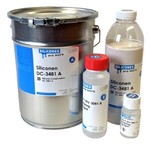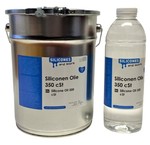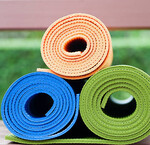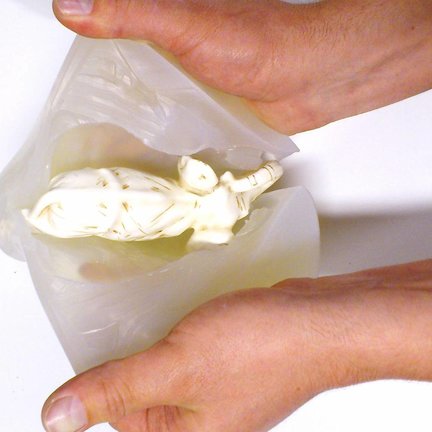Silicones, Rubber
Simply choose the best silicone casting rubber or moulding rubber for your application!
* Condensation curing silicone is used for cheap but strong moulds.
* Addition curing silicones / platinum curing silicones are more stable
 Condensation Curing
Condensation Curing
 Addition Curing
Addition Curing
 Silicone Oil
Silicone Oil
 LSR and HTV silicone
LSR and HTV silicone
 Malleable Silicone
Malleable Silicone
 Water-repellent silicone solutions
Water-repellent silicone solutions
 Dyes
Dyes
 Auxiliaries
Auxiliaries
 Silicone raw materials
Silicone raw materials
 Release agents
Release agents
 Tools / Machines
Tools / Machines
 Safety / PPE
Safety / PPE
 Primers for silicones
Primers for silicones
 Silicone sealant / Adhesive silicone
Silicone sealant / Adhesive silicone
 Silicone foam
Silicone foam
 RTV 2 Custom silicone
RTV 2 Custom silicone
 Condensation Curing
Condensation Curing Addition Curing
Addition Curing Silicone Oil
Silicone Oil LSR and HTV silicone
LSR and HTV silicone Malleable Silicone
Malleable Silicone Water-repellent silicone solutions
Water-repellent silicone solutions Dyes
Dyes Auxiliaries
Auxiliaries Silicone raw materials
Silicone raw materials Release agents
Release agents Tools / Machines
Tools / Machines Safety / PPE
Safety / PPE Primers for silicones
Primers for silicones Silicone sealant / Adhesive silicone
Silicone sealant / Adhesive silicone Silicone foam
Silicone foam RTV 2 Custom silicone
RTV 2 Custom silicone

What is casting rubber?
Cast rubber is understood to mean a castable material that behaves like rubber after curing. There are many artificial materials with this property such as some polyurethanes and epoxies. But usually with casting rubber is meant a silicone rubber. Silicone as casting rubber are a perfect alternative to natural casting rubber or natural rubber. Silicones remain perfectly rubber-like at lower and higher temperatures. Silicone lasts much longer than rubber and is more resistant to chemicals than most rubbers. We have a lot of silicones that can be labeled as casting rubber. Based on chemistry, these silicones can be divided into condensation-hardening silicones, also called tin-hardening silicones, and addition-hardening silicones, also called platinum-hardening silicones.
What is the difference between addition-crosslinking silicone and condensation-crosslinking silicone?
The chemical difference between condensation-crosslinking and addition-crosslinking silicone is in the way in which polymerization takes place. In other words. Condensation silicones form long chains in a process in which a part of the material condenses (separates). This separation is the reason that the total volume of the silicone decreases and the silicone therefore have more shrinkage than addition silicone. Addition silicones do not excrete substances during the formation of long chains and are therefore almost shrink-free.
Condensation silicones need tin salts as harder. Condensation silicones can slowly sweat out these (excess) salts. Tin salts are harmful to health and therefore these silicone molds are not suitable for use as a food mold or prolonged skin contact. Addition silicones work with platinum salts. Addition silicones do not sweat out materials (among other things because reasonably precise mixing ratios must be used).
Condensation silicones remain curing after the A and B components are mixed by reacting and forming chains. These silicones therefore also continue to sweat out material. as a result, these silicones will shrink more and more over the years. These silicones will also become increasingly brittle. The advantage of condensation polymerization is that these silicones also adhere to new condensation silicones when they are applied to an old silicone casting. That is why certainly with a two-part mold of condensation silicone there must be a good separation between the two layers during the casting of the second part, otherwise the silicone will adhere.
Addition silicones stop reacting / polymerizing at a given moment. They often stop a little too early. That is why it is recommended for addition silicones to "post cure" (place it in an oven for some time at 80-100oC). In this way, a further polymerization can be forced so that no "unreacted" material can escape from the silicone.
Condensation silicones need moisture to cure. They get this moisture from the silicone itself and from the environment / air. That is why these silicones cure faster when the humidity is high. This is also the reason why you must close the condensation silicone container properly after use, because otherwise the moisture will evaporate out. Addition silicones need heat for curing. It applies to all addition silicones that they cure faster at a higher temperature. Many addition silicones do not cure or have poor cure at low temperatures (already noticeable at temperatures below 18oC). Sometimes addition silicones are used a little cold in order to extend the processing time.
Condensation silicones are indeed less resistant to chemicals and resins than addition silicones after curing, but before and during curing, these silicones are better able to withstand contamination. Addition silicone often do not cure or do not cure properly anymore when these are contaminated by: tin salts such as condensation silicone (so never use a condensation silicone mold for addition silicone), various adhesives, phosphorus, Arsenic, Nitrogen, 1 component silicone and sulfur (so also various sulfur latex gloves). In the event of uncertainty as to whether the silicone you have chosen can withstand the other materials used, we recommend that you always set up a small test (on a part of the original) where the result will not spoil the model.
Mixing ratios are less important with silicone condensation. If you add a little too much catalyst, the curing will be faster and you will have a shorter processing time. However, too large an excess causes negative effects such as a less strong silicone. Too little catalyst, on the other hand, allows the silicones to cure very slowly.
Addition silicone one must mix very precisely, a deviation up or down ensures that the silicone no longer harden. In the most favorable case this can be remedied by post-curing in the oven at 100 ° C, but usually the result cannot be saved anymore. The silicones become sticky and soft.
Condensation silicones work with tin salts and are therefore called Tin Hardening Silicones. Addition silicones work with platinum salts and are therefore also called platinum silicones.

